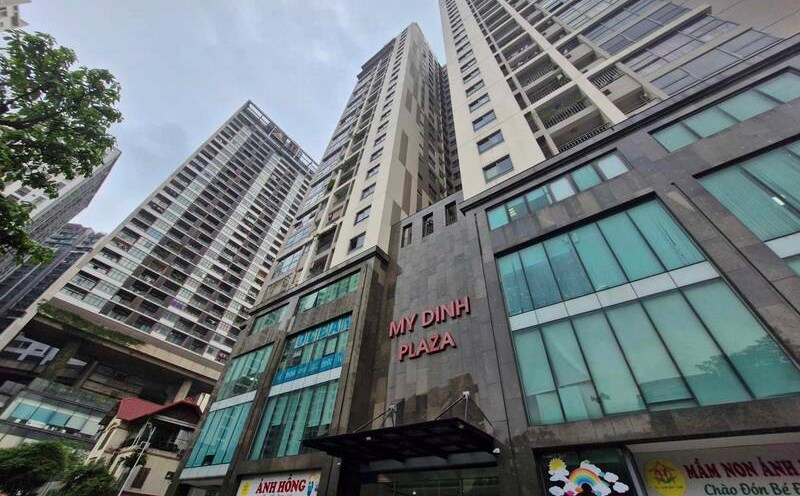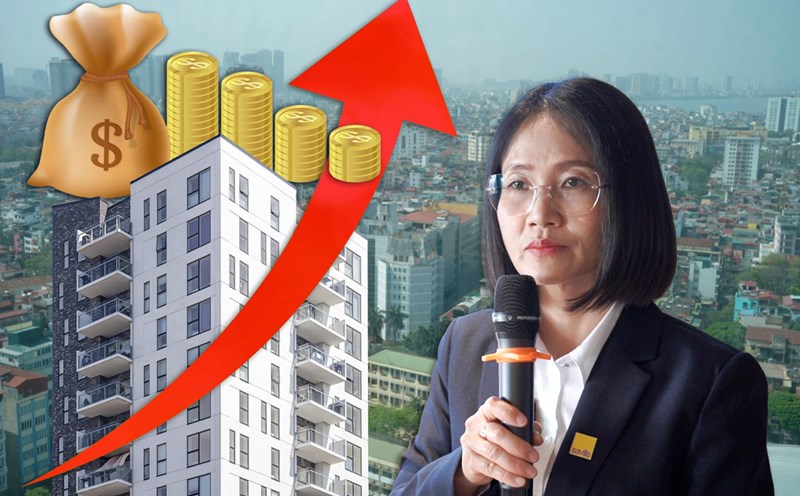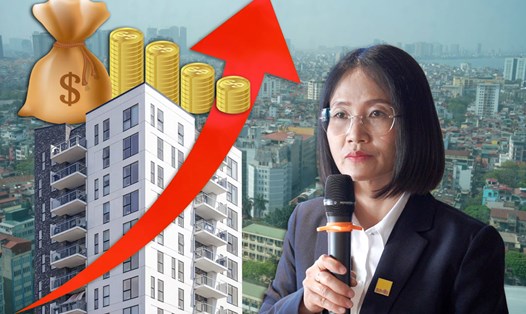Difference between primary and secondary apartment prices
Savills Vietnam's Real Estate Market Report for the first quarter of 2025 shows that in the Hanoi market, primary apartment prices have increased by an average of 22,2% per year over the past 5 years. Dong Anh recorded the highest price increase, reaching 42% per year, followed by Tay Ho with a price growth rate of 40%/year. Notably, Tay Ho is leading the average primary price of apartments with 185 million VND/m2.
In the last quarter, the market recorded a significant difference in the selling price of primary apartments from investors and secondary apartments in the market. Accordingly, in the primary market, the average selling price reached 79 million VND/m2, while the secondary price was only 60 million VND/m2.
Ms. Do Thu Hang - Senior Director, Consulting and Research Department of Savills Hanoi - said: According to a survey by Savills on more than 400 apartment projects in Hanoi, up to 47% of projects recorded secondary prices decreasing compared to the previous quarter. The decrease ranges depending on the project, on average the secondary apartment market in the first quarter of 2025 decreased by about 1% quarter-on-quarter. In addition, the gap between primary and secondary prices is widening, especially in the high-end segment.
In class A projects, the difference is up to 52%, while in the class B segment it is 21%, showing that the adjustment pressure is happening more clearly in high-value products".
The main reason for high primary prices is that new supply is mainly concentrated in large urban projects. According to Savills' report, the supply of new apartments in Hanoi in the first quarter of 2025 reached 7,940 units. Primary supply reached 11,168 units, down 33% quarter-on-quarter and 14% year-on-year. The number of apartments sold reached 7,914, down 41% quarter-on-quarter but up 49% year-on-year. Class B accounts for 99% of the number of apartments sold. The new supply has an absorption rate of 84%.
Another important reason for the decline in secondary apartment prices comes from changes in investor profit expectations. In the context of high primary prices, buyers are increasingly tending to look to the secondary market to find more reasonable prices.
In the face of that reality, many investors who have achieved the expected profit level in the previous period are adjusting their strategies, accepting to narrow the profit margin to increase liquidity, and reallocate capital flows to other markets that are more suitable for new investment tastes. This move has contributed to creating a wave of price adjustments in the secondary market.
prospects for apartment prices in the coming time
The secondary price adjustment process is assessed to no longer be localized but is taking place on a large scale, clearly reflecting the pressure of rebalancing supply and demand in the market. However, the current decrease is still not attractive enough to create a large wave of transactions between sellers and buyers. Therefore, Ms. Hang predicts that the secondary price level will continue to decrease in the coming time, especially when buyers have more options and the market gradually becomes more flexible.
On the contrary, assessing the prospect of primary apartment prices in the second quarter of 2025, the expert said that the possibility of price reduction is not high, but it is unlikely that there will be a hot increase like in previous stages.
In the remaining quarters of 2025, the new apartment supply is expected to include 7,400 apartments. In which, class B continues to lead, accounting for 67%. In particular, in the second quarter of 2025, there will be projects expected to open for new sales/open for the next phase all with beautiful locations, reputable investors and high construction quality, with prices that can be around 100 million VND/m2. Meanwhile, the primary price level is currently at an average of about 79 million VND/m2. Therefore, the possibility of primary prices falling in the second quarter is not high.
For 2026, Savills expects the primary price level to decrease when investors return to develop Class C apartment products - a segment that is almost absent today. The resupply of apartments priced under VND2 billion will help the market get closer to real demand, while creating a more sustainable balance between supply and demand.











